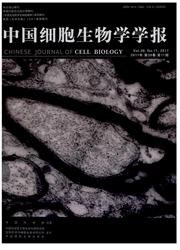

 中文摘要:
中文摘要:
为了节省经费和使转基因模型动物品种资源得到妥善保存,该研究利用自制的梯度浓度冷冻液和解冻液结合玻璃化方式分别冷冻和解冻了非人灵长类动物的183个卵母细胞(GV期、MI期和MII期)、114个卵裂期胚胎(2-细胞期、4-细胞期和8-细胞期)及25个桑椹期胚胎。其中食蟹猴卵母细胞67个,卵裂期胚胎45个,桑椹期胚胎11个;恒河猴卵母细胞116个,卵裂期胚胎69个,桑椹期胚胎14个。复苏后存活率分别为56/67(83.58%)、36/45(80.00%)、9/11(81.82%)、102/116(87.93%)、55/69(79.71%)和11/14(78.57%)。结果表明,快速玻璃化冷冻法简便且胚胎存活率高,是一种较好的冷冻食蟹猴和恒河猴卵母细胞及胚胎的方法。
 英文摘要:
英文摘要:
In order to retrench funds and preservation of variety resources of transgenic animal model, this study adopted vitrification method to cryopreserve and thaw 183 oocytes (at the GV, MI and MII stages), 144 embryos in cleavage stage (at the 2- to 8-cell stages) and 25 mulberry of the nonhuman primate with the solution prepared by ourselves. Including 67 oocytes, 45 embryos in cleavage stage and 11 mulberry of cynomolgus monkey; Including 116 oocytes, 69 embryos in cleavage stage and 14 mulberry of rhesus monkey. After thawing, the survival rate was respectively 83.58% (56/67), 80% (36/45), 81.82% (9/11), 87.93% (102/116), 79.71% (55/69) and 78.57% (11/14). The results showed that vitrification cryopreservation, simple and effective, is a good method to cryopreserve the oocytes and embryos of rhesus monkey and cynomolgus monkey.
 同期刊论文项目
同期刊论文项目
 同项目期刊论文
同项目期刊论文
 期刊信息
期刊信息
